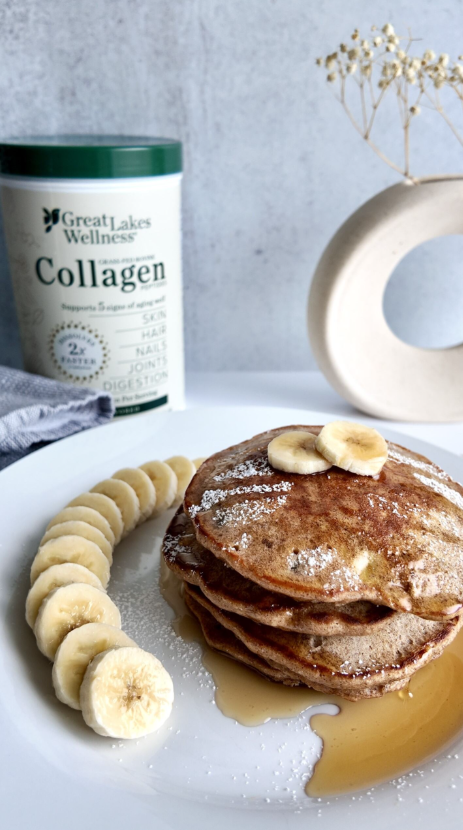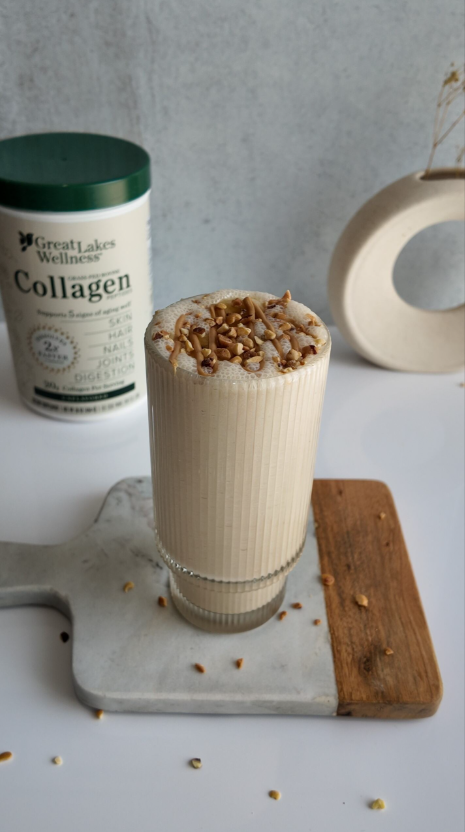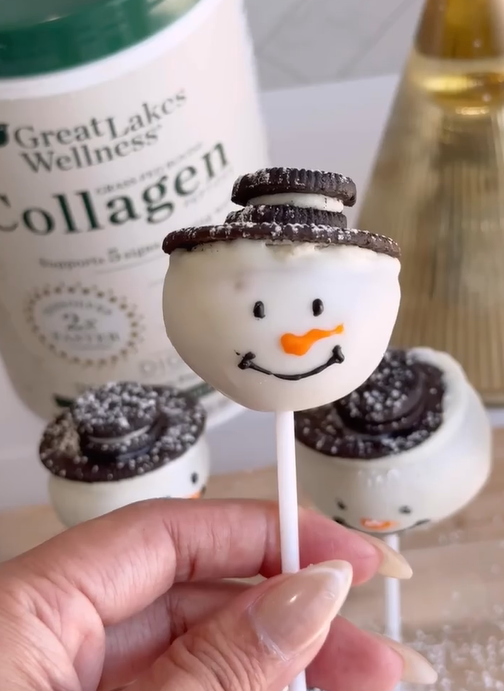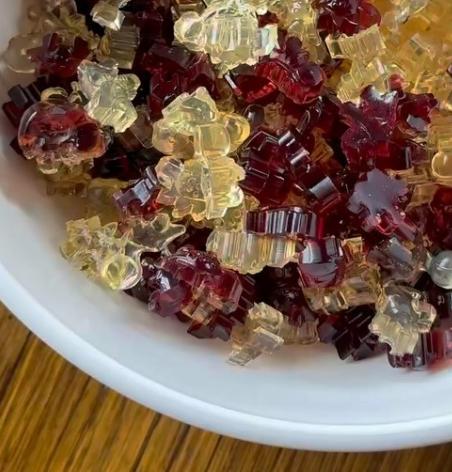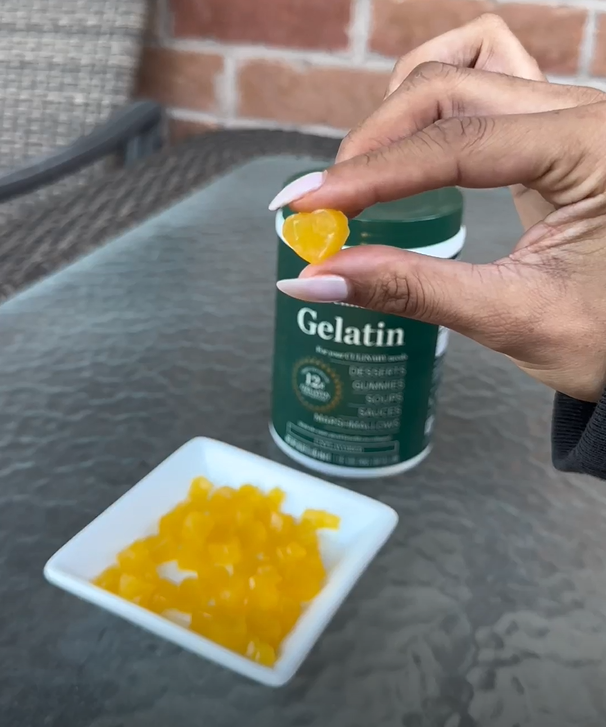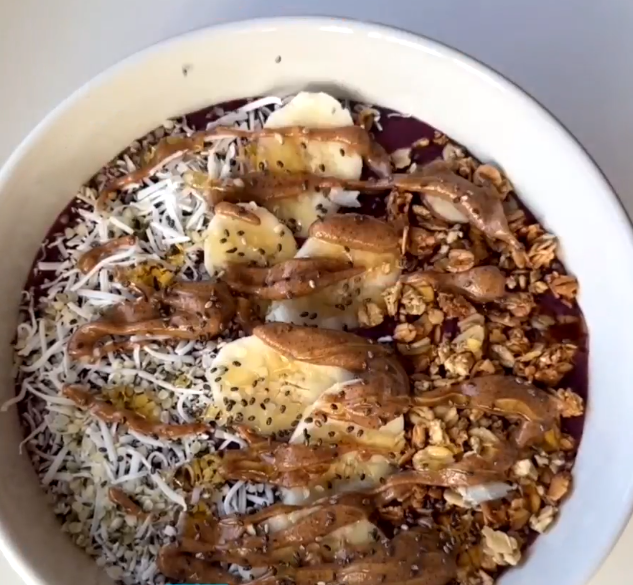Bubble tea or boba tea is one of the latest food trends to sweep the nation in the last couple of years. An Asian import, this specialty drink could once only be only found in cities like L.A. and New York. But small shops selling bubble tea, which goes by many names including, boba tea, tapioca pearl tea, and milk tea shops are “popping” up all over. In fact it’s become so popular, traditional coffee shops are getting in on the boba/bubble tea craze.
What is Bubble Tea?
The basic ingredients of bubble tea or boba tea are strong black tea, with sugar and milk. But what makes Bubble Tea special is the addition of one special ingredient: tapioca pearls. Also called boba, once added to the bottom of a milk based tea, these chewy and often black pearls made of tapioca starch are what makes a bubble tea unique.Bubble teas are served with an extra wide straw, so in between sips of your sweet, milky tea you can slurp up a slightly sweet and fun to chew tapioca pearl. If you’re not familiar with bubble tea, they may seem strange at first. But try they really do grow on you.
Today they come in an endless amount of flavors and a variety of styles including fruity and savory. And besides “Bubble Tea” or “Boba Tea” they also go by many names including milk tea, pearl milk tea, pearl tea, tapioca tea, pearl shake, black pearl tea, boba nai cha, and zhen shu nai cha.
Fun Fact: The name ‘bubble tea’ originally referred to the foamy bubbles that form when the milk and tea are shaken together, and not the tapioca pearls.

How Was Bubble Tea (Boba Tea) Invented?
There’s some mystery and debate as to how the Bubble Tea was invented. But many give credit to Ms. Lin Hsiu Hui from Taichung, Taiwan for inventing the drink in 1988. Owner of the Chun Shui Tang Tea Shop which is now a national chain, it’s believed she invented the drink when she randomly poured fen yuan, a popular Taiwanese dessert made from shaved ice and tapioca balls that rest in a sugar water, into her tea while bored during a staff meeting. The balls in Fen Yuan are traditionally clear and made from sweet potato powder which is where the name, pearl tea comes from. It’s when they’re made with brown sugar and tapioca that the tapioca pearls turn black.Bubble tea quickly spread throughout Asia and then throughout the world. It became so popular that back in June 2012 McDonald’s McCafé locations in Germany and Austria began selling bubble tea. What’s even more astounding is that they offered 250 varieties. Today many bubble tea shops and cafes around the world offer even more variations and flavors than that.
Are the Ingredients in Bubble/Boba Tea Healthy?
Umm…. Not so much! Similar to fancy coffee drinks, bubble teas from bubble tea shops come in a variety of flavors and can be super sweet. This means if you’re eating clean and following a diet that’s low in sugar and carbs, ordering a bubble tea out isn’t a great idea (but don’t be discouraged we’ve got you covered below!). Not only are these drinks loaded with sugar and calorie-laden flavored syrups, but tapioca pearls are made from cassava root starch, which is high in calories and carbs. One cup is 544 calories alone!Here’s what’s inside one cup of tapioca pearls:
- 544 Calories
- 135 g Total Carbohydrate
- 1.4 g Dietary fiber
- 5 g Sugar
- 0.3 g Protein

How to Make Sugar Free, Keto-Friendly Boba Pearls
If you’re eating healthy and living that low- carb, low-sugar life you don’t have to live without your boba. In fact you can make a Bubble Tea at home that’s virtually sugar free and absolutely delicious.Instead of using the calorie and carb dense tapioca pearls, it’s easy to make at home using gelatin, which is carb-free and has a number of benefits for the body.
Gelatin Can:
- Help promote a strong healthy gut lining*
- Provide the body with the amino acids glycine and proline, which are used in the production of collagen*
- Help promote healthy hair, skin and nails*
- Support healthy joints*
And unlike tapioca pearls whose only real flavor comes from the sugar they’re sweetened with, these gelatin bubble tea pearls can be flavored any way you like with a variety of flavored teas, coffee, extracts and healthy, preferably sugarless sweeteners.
So that means if you can still enjoy bubble tea even if you’re following a low-carb diet (keto, Paleo, etc.), you’re diabetic, or limiting your sugar and starch consumption.

To make the gelatin bubble tea pearls you’ll need only 4 ingredients:
If you want to stick with a traditional tea based bubble milk tea like we did, steep 2 – 3 black tea bags in 1 cup of hot water to make your gelatin pearls. This way the gelatin pearls will be nice and dark like the traditional black tapioca pearls you’d find in Boba tea shops. You can also use coffee which is perfect if you want to make a coffee based bubble/Boba milk “tea.” Decaf or herbal tea also work great if you can’t do caffeine.
To make your bubble tea pearls, for this recipe you’ll need unflavored powdered gelatin which will help the “pearls” to set and give them a bouncy chewy texture. Neutral in taste and easily flavored, gelatin powder easily dissolves in hot liquids like the hot tea or coffee we’re using.

Great Lakes Wellness Culinary Gelatin Is:
- Grass-fed
- Gluten-free
- Non-GMO
- Paleo-friendly and Keto-certified
- Kosher
2 Cups of Freezer-Chilled Neutral Oil: By dropping our gelatin-tea mixture into super cold oil, the physical nature of the oil helps the gelatin form into balls or pearls. You can choose any oil you like, because the gelatin pearls are then strained from the oil and then rinsed. The strained oil can be reserved for later use.
Try avocado, grapeseed or any other oil of your choice. Coconut won’t work because of the way it solidifies at cold temperatures. You’ll need to chill the oil in the freezer for at least 2-3 hours and will have a cloudy appearance when it’s ready.
Additional Tools You’ll Need:
- 1 tall jar to hold your oil
- A syringe or dropper. In a pinch a ¼ teaspoon measuring spoon or straw will work
- Fine mesh strainer

How to Make The Gelatin Bubble Tea Pearls (Boba)
Step 2 – To prepare the gelatin mixture. Mix 2 tablespoons of Great Lake Wellness Culinary Gelatin into 1 cup of prepared, presweetened room temperature strong tea or coffee. Allow it to “bloom” for 5 minutes. Then add to a small saucepan. Bring to a boil, whisk the gelatin into the liquid and simmer for a minute. Remove from heat and pour into a heat-safe bowl. Allow the gelatin mixture cool to almost room temperature.
Step 3 – When the oil is ready it should look thick and slightly cloudy. If your oil is partially frozen in the center, give it a stir to make the oil texture even throughout. If it over froze, simply let it stand out for a few minutes at room temperature and then give it a stir. If you don’t want to wait you can warm it a bit with a few tablespoons of room temperature oil and give it a good stir. Placing your jar in an ice-bath can help keep the oil cold, but is not necessary.
Step 4 – With a syringe or pipette drop large drops of gelatin into the cold oil. Try to space out the drops so they don’t stick together. It may take a few tries to get used to dropping the gelatin and seeing what size you want your pearls to be. Continue until all the gelatin mixture is finished.

How To Store The Gelatin Boba Pearls
This recipe yielded us about ¾ cup of gelatin boba pearls. If you want to enjoy more guilt-free bubble tea throughout the week, just double the recipe.If you have leftover gelatin pearls, gently rinse them to moisten and then store in an air-tight container in the fridge. For best results use within 3-4 days.
HEALTHY DIY GELATIN BUBBLE/BOBA TEA PEARLS
(Sugar-free, Low-Carb, Gluten-Free, Dairy-Free, Keto, Paleo)
If you love bubble tea, but hate all the sugar and carbs found in traditional tapioca pearls, then make these low-carb friendly bubble tea pearls made with protein-rich Great Lakes Wellness grass-fed gelatin instead. You won’t believe how fun and easy they are to make! Just be sure to use these pearls for cold boba/bubble tea drinks as the gelatin will melt in hot liquids.
INGREDIENTS
- 1 cup prepared strong tea or coffee sweetened to taste* see notes
- 2 TBS Great Lakes Wellness Grass-fed Beef Gelatin
- 2-4 cups of neutral oil avocado, grapeseed, etc., chilled in the freezer for 2 hours
DIRECTIONS
- Add gelatin to cooled tea or coffee. Stir and allow to sit for 5 minutes.
- Add gelatin-tea mixture to a small saucepan. Bring to a boil. Lower heat and simmer for 1 minute. Whisk to make sure the gelatin is completely dissolved.
- Remove from heat and pour into a heat-safe bowl. Allow to cool to room temperature.
- Remove jar from the freezer. The oil is ready when it is slightly cloudy and thick. Give it a stir before starting to make sure the oil texture is smooth and even.
- Draw the gelatin mixture into a syringe and even squirts drop into the cold oil. Be sure to space out the drops so the gelatin pearls don’t stick or clump. Do a few test drops to get a feeling for size. ⅛ - ¼ tsp per drop is perfect. If the gelatin drop looks like it is just sitting on top, your oil may be too cold. Either let it sit out a minute or stir in a tablespoon of room temperature oil to bring down the temp.
- Once you get the hang of it, continue with the rest of the gelatin mixture. If the gelatin gets a little too thick to drop, just pop it in the microwave for 5 seconds to warm and stir. Then continue.
TIP: If the gelatin bubbles are “growing tails” as they fall to the bottom of the jar your oil has become too warm. Either put it back in the freezer for a bit. Having a few jars to switch out can make the process faster. You can also have the jar sitting in an ice bath before starting to help keep the temperature of the oil cold.
When you’re done, drain the gelatin “pearls” with a strainer reserving oil for later use. Rinse them well under cold water to remove surface oil. Keep in an air-tight container until ready to use. For best results use within 3-4 days in your favorite bubble tea recipes.
SERVINGS: ¾ cup of gelatin pearls (80 calories, 0 carbs, 22 g protein)
- To make the gelatin pearls almost black like tapioca pearls we used 3 black tea bags. If you’re concerned about caffeine, use decaf instead.
- For different flavors, experiment with different tea types (including herbal) to make your bubble tea gelatin pearls. We made one batch of pearls with a chocolate hazelnut tea that came out delicious. For concentrated flavor use 3-4 tea bags per cup of water.
- To keep these gelatin pearls sugar-free, sweeten the tea with your favorite healthy sugar-free substitute like stevia, monk fruit, or erythritol
- For super black gelatin boba pearls without adding food coloring, try adding a pinch of activated charcoal to the warm gelatin tea mixture before dropping into the oil.
- To serve, be sure to pick up some reusable or biodegradable boba tea straws, which are extra wide for slurping up your bubble tea pearls.
Now That You Know How To Make Gelatin Boba Pearls, Try These Low Carb Collagen Bubble Teas!

Raspberry Lemonade Bubble Milk Tea
For a refreshing and fruity bubble tea recipe that’s actually healthy enough to drink everyday, and has benefits for beauty this is one to try. Made with Great Lakes Wellness Daily Beauty Raspberry Lemonade Collagen, each serving provides 12 grams of clinically researched Verisol® Collagen type 1 & 3 peptides as well MSM, hyaluronic acid, vitamin C and biotin for radiant healthy skin, hair and nails. Get the recipe!

This bubble tea recipe tastes sooo indulgent, but it’s actually super healthy! And it’s so incredibly delicious. Made with stevia sweetened Great Lakes Wellness Daily Joint Caramel Collagen enriched with clinically researched Fortigel® MSM, hyaluronic acid and vitamin C, you’ll get 12 grams of quick dissolve collagen peptides in every serving. This is one bubble tea you can feel good about drinking everyday. Get the recipe!

Honey Cinnamon Collagen Bubble Tea
If you love honey and cinnamon, try this collagen rich and caffeine free Boba tea that can help support digestion. Made with Great Lakes Wellness Daily Digestion Honey Cinnamon Collagen and sweetened with stevia, this bubble tea provides 12 grams of type 1 & 3 collagen as well as clinically researched probiotics, prebiotics and vitamin C. Get the recipe!
